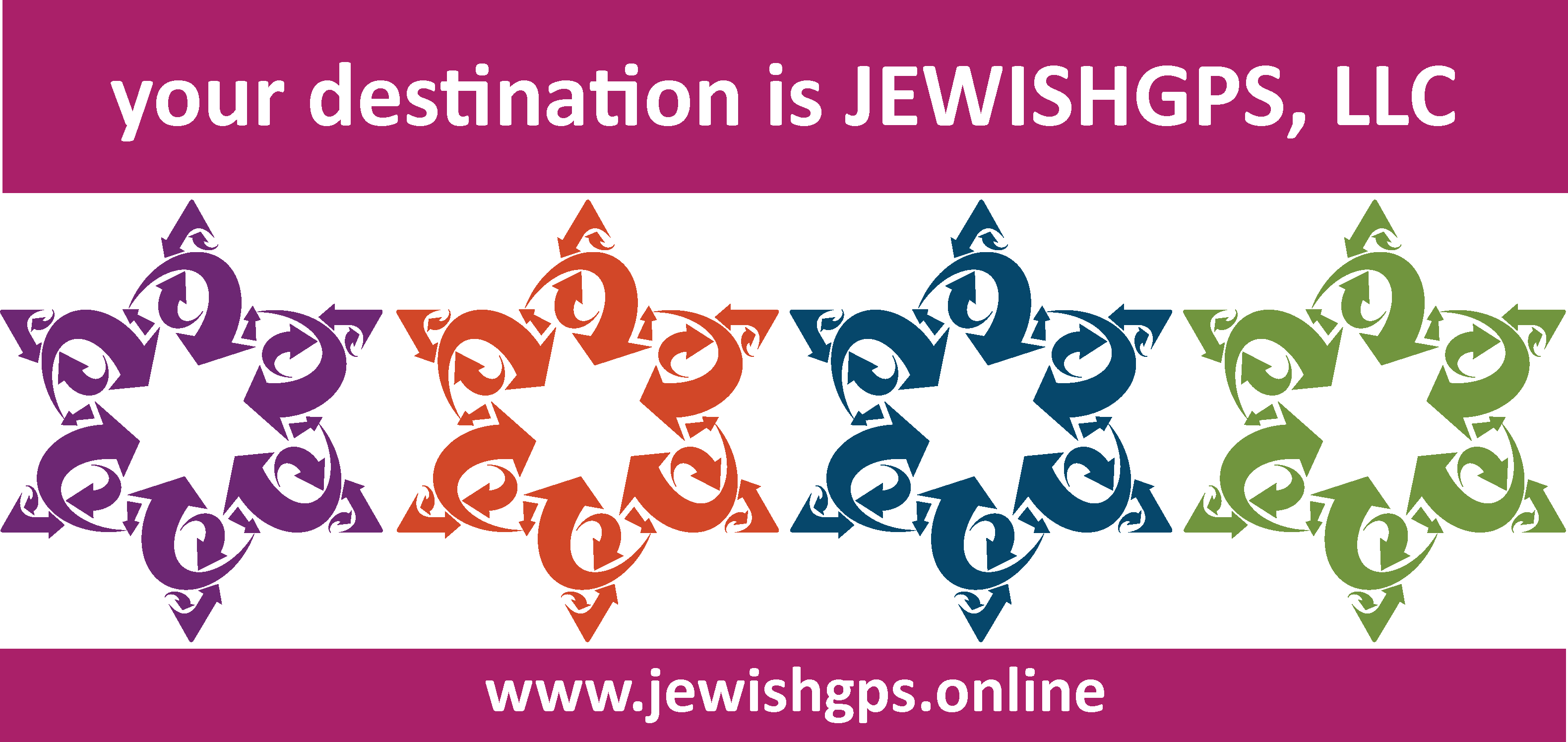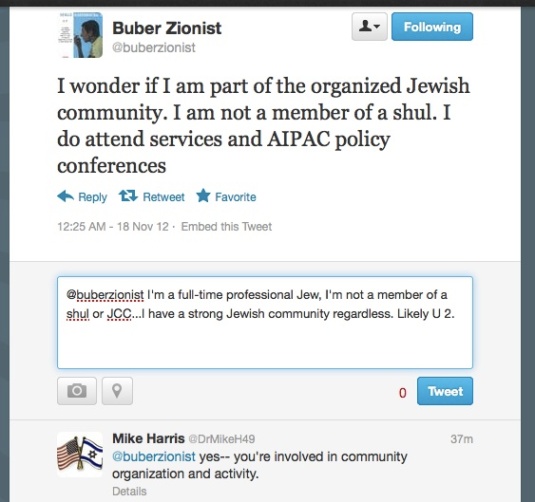It’s the straw that broke the camel’s back … the tweet that pushed me right over the edge (or just to finally write this blog!):
If you are wondering why @buberzionist would even ask this question (I’m making an assumption), and why I would even respond the way I did, it’s because so many of the Jewish identity/engagement/participation/attachment studies in the Jewish world use certain checklists (survey questions) to determine how the Jewish population is behaving “Jewishly” and @buberzionist and I don’t fit neatly into these checklists.
Here are a few examples:
In A Tale of Two Jewries: The “Inconvenient Truth” for American Jews (2006) Steven M. Cohen writes on pages 6-7 about the “attachment to well-established Jewish organizations” and proceeds to share the statistics about belonging to Jewish organizations (other than JCCs and synagogues), Jewish Federation campaign giving. JCC memberships, synagogue memberships, and then moves on to ritual behaviors. On page 7 there is a table called “STABLE LEVELS OF RELIGIOSITY, 1990-2000”:
The 2008 study and report that Steven M. Cohen and Ari Y. Kelman authored entitled Uncoupled: How our Singles are Reshaping Jewish Engagement was completed on behalf of The Jewish Identity Project of Reboot of the Andrea and Charles Bronfman Philanthropies. Charts in this report continue to explore these similar themes of synagogue and JCC membership, Federation donorship, as well as ritual and holiday participation .
In the 2011 study and report Camp Works: The Long-Term Impact of Jewish Overnight Camp, Evidence from 26 U.S. Jewish Populations Studies on Adult Jewish Engagement, authors Steven M. Cohen, Ron MIller, Ira M. Sheskin and Berna Torr do a meta-analysis of 26 studies. Here is a snapshot of one of their analyses which highlights behaviors a bit more diverse, but that still includes holiday candle lighting, synagogue membership, Jewish Federation giving, and synagogue attendance:
So why is this problematic? Well, let’s just take me for example … if you were to judge my Jewish identity/engagement/participation/attachment based on the repeated characteristics in these studies, you would end up labeling me as under-engaged with a low identity threshold. I don’t belong to a synagogue, I don’t belong to a JCC, I have not made a donation to a Federation in over two years, I don’t light Shabbat candles on any regular basis, I skipped Rosh haShanah services this year and Yom Kippur services the last two years (other than showing up for Yizkor), I typically forget to light Hanukkah candles and rarely attend synagogue services. So for example, in the Camp Works graph’s High Impact section, I fail on three out of four criteria.
So why is this problematic? Come on, my business is called JewishGPS and when people ask me what I do for a living I tell them that I’m a “professional Jew.” I live/breathe/eat Jewishly 24/7/365. So what criteria might be more appropriate to survey? Here are a few suggestions:
- Presence of Jewish art/artifacts in my home
- Percentage of books with Jewish content in my home or office
- Owns and consistently wears jewelry that is Judaic in nature
- Jewish holidays/events on my calendar
- Time spent in personal Jewish study
- Sharing links to articles of Jewish content on the internet
- Tweeting from or about Jewish events
- Time spent teaching Judaism (in camps, schools, synagogues, programs)
- Time spent as a volunteer in a significant leadership role in a Jewish organization
- Time spent leading other Jews in Jewish behaviors (internal or external to a Jewish organization)
- Observation of Kashrut on some level in and/or outside my home
- Knowledge of Jewish communal resources available
- Knowledge of Jewish practices of Jews unlike me (and the origins of those practices)
- Participation in conversations that are Jewish in nature (politics, ritual, social, identity, etc)
- Feeling a strong connection to a self-made community of Jews
So @buberzionist (and everyone else), if you are reading this … how would “rank” in this list of criteria vs. the ones that likely prompted your tweet?
I am curious what other criteria readers of this blog might suggest be the foundation for assessing Jewish identity/engagement/participation/attachment. I have the pleasure of personally knowing a few of the social scientists mentioned in this blog and respect them for their brilliant minds and contribution to our Jewish community; I encourage them (and the others not mentioned) to consider how they might use these new criteria in future studies.
p.s. In the last decade (plus a little) the inclusion of social connections to other Jews, repeated trips to Israel, an emotional connection to Israel, and in-marriage have been included in these studies – which is an improvement I wanted to acknowledge.






Leave a reply to jewishedlab Cancel reply